Cherokee Crossover Sets New Standards
By John Gilbert
WESTLAKE VILLAGE, CALIF. — The new 2014 Jeep Cherokee — an old name with a decidedly new face — raises the level of on-road driveability and fuel efficiency for any vehicle ever to wear the proud Jeep name, without compromising any of its off-road heritage.
The look of the new Cherokee is its most priminent first-impression feature, and it is, in a word, polarizing. Some critics, and a few within the Jeep family, think it goes too far, while others think it’s the best-looking thing Jeep has ever done. There will be few, if any, who will be able to avoid belonging to one extreme camp or the other.
Built of 65 percent high strength steel, the Cherokee allows you to bring three or four people with you and shows off its firm, independent rear suspension climbing rocks or while holding steady as you carve precise cornering lines at highway speed. All the while, it registers up to and beyond the EPA highway estimated 31 miles per gallon.
The new standard MultiAir 2.4-liter TigerShark engine has a city 22 and highway 31 gas mileage EPA figures, an improvement of more than 45 percent over the engine it replaces in the Jeep line. The entirely new 3.2-liter V6 has EPA estimates of 19 city, 28 highway. With both engines, those figures seem conservative. I talked to one engineer who said he drove the V6 on a 200-mile highway trip and got 32.5 miles per gallon, with that number dropping to 28 when he drove much more aggressively on his return.
Jeep’s strongest trademark is its 7-slot grille, and the Cherokee has seven slots, but they have never been shaped so provocatively, with a convex bend near the upper area of the vertical slots, rather than the normal straight slab of slots. The tiny light enclosure that turns the corner on the upper extension of that contoured line adds afurther high-tech touch.
If Jeep officials didn’t decide to resurrect the name Cherokee, they could have called it the “Surprise,” because there’s nothing about the 2014 Jeep Cherokee that is not surprising.
- You could say the appearance is surprising, but that would be a giant understatement, because the dramatically contoured Cherokee looks more like a futuristic concept vehicle than a mainstream vehicle.
- The interior is every bit as surprising as the exterior, with firmly supportive bucket seats, and instrumentation that is straightforward and yet high tech, and everything is covered with high-quality material.
- The engines are surprising, because both the 3.2-liter V6 and the 2.4-liter MultiAir 4 are new, bristling with technical goodies from intake to exhaust, and the transmission is a surprisingly unique unit, too, being the first application of a new ZF 9-speed automatic.
- The trademark Jeep 4-wheel-drive capability is even surprising, with three entirely different choices of systems to choose from, all hooked up to a front-wheel-drive platform instead of the conventional rear-drive layout — the first-ever Jeep to be so designed.
- The Cherokee’s performance on the road is lean and agile, with precise road-holding control even if you drive it like a sports car around curvy 2-lane roadways.
- Such impressive on-road performance begs the question that the new Cherokee must be conceding something from Jeep’s long and proud off-road heritage, but is it? No. Surprisingly, no.
- Even the name is surprising. Sure, Jeep built a vehicle call the Cherokee for decades, but after it grew into the larger and more sophisticated Grand Cherokee, the plain old Cherokee disappeared from the scene. So it’s a bit of an ironic twist that Jeep, which has the Grand Cherokee, the Patriot, the Compass, and the traditional Wrangler, would bring out its newest and most high-tech offering ever, and bring back the long-gone but not forgotten Cherokee name.
The first time I saw a Cherokee on an auto show display I thought it was a design exercise, a concept car that may or may not be built. Since then, I’ve been able to heckle Jeep’s product manager Jim Morrison that my first hunch might be correct, because the launch was pushed back, then postponed, before it was finally held in September. The presentation was at the Four Seasons Westlake, in Westlake Village, Calif., an hour outside of Los Angeles. It was made in conjunction with a new Ram 1500 pickup that features a new 3.0-liter turbo-diesel V6, and the redesigned Durango, a large, but slimmed-down SUV.
But the Cherokee was the prize pick of the litter, in my mind. I was most curious about which powertrain might be preferable. The 3.2-liter V6 is a new smaller derivative of the outstanding 3.6-liter Pentastar V6 that powers everything from the Ram to the Grand Caravan and Grand Cherokee, and virtually every sedan in between.
In 3.2 form, it puts out 271 horsepower and 239 foot-pounds of torque, and has a 4,500-pound towing capacity.
Meanwhile, Chrysler, Dodge, Jeep and Fiat — with a dose of input from South Korea’s Hyundai — have had a hand in the new 2.4-liter TigerShark MultiAir engine. To briefly recap, Fiat, the new owner of Chrysler Group LLC, has an overachieving subcompact called the Fiat 500, and it has a high-performing model called the Abarth. It’s major trick is to use a comparative tiny 1.4-liter engine and wrench bigger-feeling power and performance out of it with a patented MultiAir system, which replaces the intake camshaft with a series of oil-filled cylinders, and the activation of the exhaust valves compresses the oil in those cylinders to hydraulically activate the intake valves.
The best thing about the MultiAir concept is that it allows for almost infinite valve overlap, and Chrysler engineers have expressed enthusiasm because the system can be used on any engine. “Let’s see,” I said, ever the skeptic, but eager for any high-tech idea.
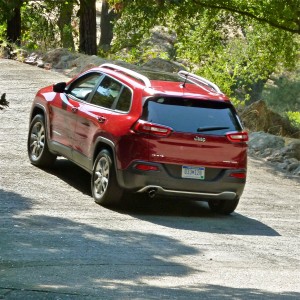
Stylish from rear as well as front, the Cherokee offers a lot of interior storage space, befitting a capable crossover.
Chrysler worked out a global engine plan with Hyundai several years ago and wound up getting a slick, Hyundai-designed 2.4-liter 4-cylinder for its own use. While it works fine in various basic deployments, the Cherokee gets the first application of the MultiAir system to an engine other than Fiat’s tiny 1.4.
The 2.4 with MultiAir is smooth and has surprising capability, with 184 horsepower and 171 foot-pounds of torque.
Morrison explained to me that the two engines have different strengths, for different people, much the way the various 4-wheel-drive systems might appeal to different buyers. So I explained to Morrison what it’s like in January or February, after a sleet storm and a blizzard, to try to climb 10 blocks of 20-degree grade to scale the hills of Duluth, Minnesota, in order to get to the biggest shopping mall, grocery store, airport, or university.
“Which would you guess is the best for that?” I asked him.
Morrison hesitated, then honestly said he didn’t know.
“I’ve been driving a Cherokee with both engines as my personal vehicle for a while, and I’m back and forth,” said Morrison. “I really like both engines for different reasons, and I don’t know which I’d choose if I had to buy one of the other. The 3.2 is more powerful, and the 2.4 more fuel-efficient, but the V6 is very good on fuel, and the 4-cylinder has power that is easily adequate.
“I spent the last few days before the introduction driving different Cherokees back and forth on the Rubicon Trail,” Morrison added. “It’s a crazy terrain, in California and Nevada, and both engines earned their stripes, and so did our new Active Drive Lock.”
I’ve driven some Jeep Wranglers on the Rubicon Trail, and Morrison is correct in his assessment of the ruggedness of the terrain. It’s the sort of place that dedicated off-roaders treasure, and dedicated on-roaders can’t imagine ever driving on.
Jeep has the all-out off-roading champ in the Wrangler, which outruns anything on such courses except, perhaps, the Range Rovers that are also designed for such rugged duty. The Grand Cherokee is decidedly upscale, but Jeep makes sure it also will do the job off-road. The smaller Patriot, and the Liberty and urban commuting Compass are tough enough, if less outright impressive on off-road courses.
With the Cherokee — which will replace the Liberty in the Jeep lineup — a buyer can pick a vehicle configured to meet whatever personal standards might apply. The first system is Active Drive I, which is fully automatic, with a bias toward front-drive until any slippage is detected, then torque is distributed to both axles, with no switching by the driver requires while adjusting between 2 and 4 wheel power.
Active Drive II has a 2-speed transfer case and you can lock it into 4×4, meaning all four wheels pull with equal force from front and rear driveshafts, perfect for towing. Gear reduction in low range improves climbing ability, as ride height increases by an inch, and crawl ratios improve with either engine.
Active Drive Lock has all the characteristics of Active Drive II, and adds a locking rear differential for better application of low-speed power for the most severe conditions. Active Drive Lock is standard on all Cherokee Trailhawk models.
Cherokees adorned with the Trailhawk emblem are trail rated as the most capable in severe conditions, with enhanced approach and departure angles, skid plates, tow hooks, a locking rear differential with selectable settings for different terrain. The Cherokee Trailhawk has an approach angle of 29.8 degrees, a departure angle of 32.1 degrees, and breakover angle of 23.3 degrees, and a ground clearance of 8.7 inches.
All the 4×4 systems have Selec-Terrain, which is a traction control system with five console switch settings to best attack snow, sport, sand/mud, rock, and automatic. The settings are electronically coordinated with brakes, stability control, transmission, powertrain, and hill-descent or hill-ascent control.
But that’s not all. “The Active Drive Lock has an automatically disengaging rear axle so when you’re cruising on the highway, it’s strictly in front-wheel drive for fuel economy,” Morrison said. “If there is any slippage detected, it automatically connects to a 60/40 torque split and actively manages the torque. It’s perfect for snow, as well as sand or mud, because in certain situations, 100 percent of the torque can be directed to the rear. And it doesn’t wait for wheelspin — if the windshield automatic windshield wipers come on, for example, the rear axle is re-engaged.
The new MacPherson strut front suspension has 6.7 inches of travel, and the rear multi-link architecture allows 7.8 inches for maxijmum articulation. An electronic power steering system that replaces the conventional hydraulic steering, and steering feel maintains a consistent effort throughout.
It’s impressive that Jeep could package so much impressive stuff inside such a great-looking vehicle, which will start out being priced in the mid-$20,000 region to compete against such vehicles as the Ford Escape, Honda CRV, Toyota RAV4, and any other all-wheel-drive midsize or compact crossover SUVs. Of course, it’s easy to get carried away with features and options and run the price up over $30,000 and near $40,000.
One of the test vehicles I drove had a base price of $29,495 in Trailhawk form, and climbed to $38,660 by adding black leather, the technology group with all the connectivity features, navigation, and Sirius satellite radio and traffic aids.
Having driven both the 2.4 MultiAir and the 3.2 V6, and running the 9-speed automatic through its paces, I was impressed with both. As for the hillside of Duluth, we’ll have to wait for wintertime and get one, or both, to road test.
Comments
Tell me what you're thinking...
and oh, if you want a pic to show with your comment, go get a gravatar!


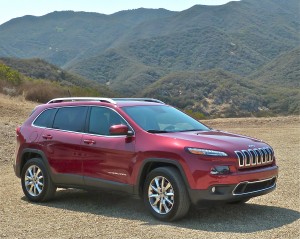
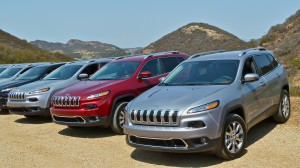

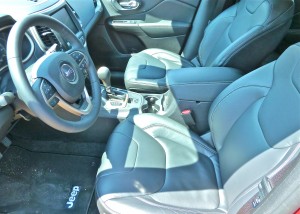
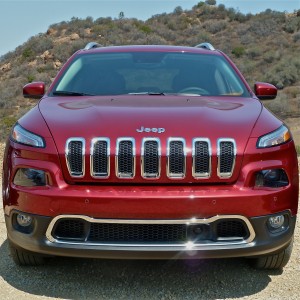
 John Gilbert is a lifetime Minnesotan and career journalist, specializing in cars and sports during and since spending 30 years at the Minneapolis Tribune, now the Star Tribune. More recently, he has continued translating the high-tech world of autos and sharing his passionate insights as a freelance writer/photographer/broadcaster. A member of the prestigious North American Car and Truck of the Year jury since 1993. John can be heard Monday-Friday from 9-11am on 610 KDAL(www.kdal610.com) on the "John Gilbert Show," and writes a column in the Duluth Reader.
John Gilbert is a lifetime Minnesotan and career journalist, specializing in cars and sports during and since spending 30 years at the Minneapolis Tribune, now the Star Tribune. More recently, he has continued translating the high-tech world of autos and sharing his passionate insights as a freelance writer/photographer/broadcaster. A member of the prestigious North American Car and Truck of the Year jury since 1993. John can be heard Monday-Friday from 9-11am on 610 KDAL(www.kdal610.com) on the "John Gilbert Show," and writes a column in the Duluth Reader.